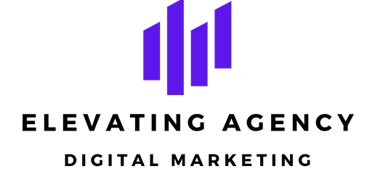10 Proven Digital Marketing Strategies to Elevate Your Business Results
Practical tips and insights to boost ROI through effective marketing techniques.


Understanding Digital Marketing
Digital marketing encompasses a wide range of strategies and tactics that businesses utilize to promote their products or services online. The approach emphasizes the importance of reaching consumers through various digital channels, such as search engines, social media platforms, email, and websites. The significance of digital marketing has grown considerably in recent years, primarily due to the rapid advancements in technology and the ubiquity of the internet in everyday life.
One of the primary distinctions between digital marketing and traditional marketing lies in their respective methodologies. While traditional marketing often relies on offline mediums like print ads, television, and radio, digital marketing capitalizes on online efforts to engage potential customers. Digital channels provide real-time metrics and analytics that traditional methods typically lack, enabling businesses to measure effectiveness promptly and adjust strategies as necessary.
The need for businesses to adopt digital marketing strategies is paramount in the current competitive landscape. Companies that neglect digital platforms risk losing a significant portion of their target audience, as consumer behavior increasingly shifts toward online interactions. Modern consumers conduct research online prior to making purchases, which underscores the importance of an effective digital presence. Marketers are called to be insightful about their target demographics and to personalize their approaches, ensuring they meet the specific needs and preferences of consumers.
A well-integrated digital marketing plan not only considers various online platforms but also aligns with overall business goals. This enables companies to create a cohesive customer journey that nurtures prospects from awareness to conversion. The dynamic nature of digital marketing requires businesses to stay updated on trends and consumer behaviors, ultimately allowing them to remain competitive and relevant in a fast-paced digital economy.
Leverage Social Media Marketing
In the contemporary digital landscape, social media marketing has emerged as an invaluable tool for businesses aiming to enhance their visibility and connect with their audiences. Platforms such as Facebook, Instagram, LinkedIn, and Twitter each offer unique opportunities to engage with users, build a community, and drive conversion rates.
Facebook remains a dominant force, providing businesses with extensive reach due to its vast user base. Companies can share multimedia content, utilize targeted advertising to achieve specific audience demographics, and create interactive posts that foster engagement. Similarly, Instagram has gained popularity, especially for visually-driven content. Businesses can leverage its features through stories, reels, and shoppable posts to create a compelling narrative around their products or services.
LinkedIn serves a different purpose, primarily catering to a professional audience. It is an effective platform for B2B marketing, allowing companies to showcase their expertise, connect with industry leaders, and share valuable content. Twitter, on the other hand, thrives on real-time communication, making it ideal for quickly sharing news, engaging with customer queries, and joining trending conversations.
Creating engaging content across these platforms is critical to successful social media marketing. Businesses should focus on crafting relatable and valuable posts that resonate with their target audience. Interactive content such as polls, contests, and Q&A sessions can help build a sense of community and foster relationships with followers.
Furthermore, organizations can utilize paid social media advertising to extend their reach and target specific customer segments effectively. Ads can be fine-tuned based on user interests, behaviors, and demographics to ensure the greatest return on investment.
To measure the success of social media campaigns, businesses should track key performance indicators such as engagement rates, reach, conversion rates, and audience growth. By leveraging analytics tools, companies can gain insightful data to refine their strategies, ensuring that their social media marketing efforts effectively elevate overall business results.
Optimizing for Search Engines (SEO)
Search engine optimization (SEO) is an essential digital marketing strategy that aims to improve a website's visibility in search engine results, thereby driving organic traffic. The foundational aspect of SEO involves keyword research, where businesses identify relevant terms that potential customers might use to search for their products or services. By understanding and targeting these keywords, businesses can strategically incorporate them into their content, enhancing the likelihood of ranking higher in search queries.
On-page optimization is another critical component of SEO. This includes optimizing various elements of a web page, such as title tags, meta descriptions, headers, and image alt-text, to align with targeted keywords. Proper internal linking and ensuring a user-friendly website structure also play a significant role in enhancing the site's SEO performance. Furthermore, the content quality is paramount; informative, engaging, and well-structured content encourages visitors to stay longer and reduces bounce rates, which significantly affects search rankings.
Off-page optimization includes strategies such as building high-quality backlinks and leveraging social media. Quality backlinks from reputable sites signal to search engines that the content is valuable and trustworthy. Businesses can enhance their off-page SEO by fostering relationships with influencers and engaging in guest blogging and collaborative marketing efforts. Moreover, local SEO strategies are crucial for businesses targeting specific geographical areas. Optimizing for local search includes claiming listings on Google My Business and ensuring consistency in business information across various online directories.
Both small and large businesses can implement these SEO strategies, regardless of their industry. The key is to stay focused on creating high-quality content that meets the needs of the target audience while following SEO best practices. By doing so, businesses can improve their search engine rankings, increase organic traffic, and ultimately drive conversions, making SEO a vital strategy in the digital marketing landscape.
Email Marketing Campaigns
Email marketing is an essential digital marketing strategy that enables businesses to nurture leads and strengthen customer relationships. By effectively leveraging email campaigns, organizations can communicate directly with their audience, provide valuable content, and ultimately drive conversions. To maximize the potential of email marketing, it is imperative to adopt segmentation, personalization, and automation as key components of your strategy.
Segmentation involves dividing your email list into distinct groups based on various criteria such as demographics, preferences, or purchasing behavior. This allows for a tailored approach, ensuring that subscribers receive content that resonates with their specific needs. Personalized emails increase engagement rates, as recipients are more likely to respond to messages that address their interests or past interactions with the brand.
Automation plays a crucial role in streamlining the email marketing process. By utilizing automation tools, businesses can set up drip campaigns that send targeted emails based on user behavior at precise intervals. This not only saves time but also ensures consistent communication with leads throughout their customer journey.
Creating compelling email content is vital for capturing your audience's attention. With a clear subject line and engaging body text, businesses can entice recipients to open and interact with their emails. Additionally, well-designed templates that reflect the brand's identity and use visually appealing elements can enhance the overall user experience. Incorporating strong calls-to-action encourages subscribers to take the desired action, whether it be making a purchase or signing up for a webinar.
To evaluate the success of your email campaigns, analyzing metrics such as open rates, click-through rates, and conversion rates is essential. These insights enable businesses to make data-driven decisions, refining strategies for better performance. Numerous case studies demonstrate the effectiveness of targeted and automated email marketing, where businesses have experienced significant growth in customer engagement and sales. By implementing these best practices, organizations can harness the true power of email marketing campaigns to elevate their business results.


